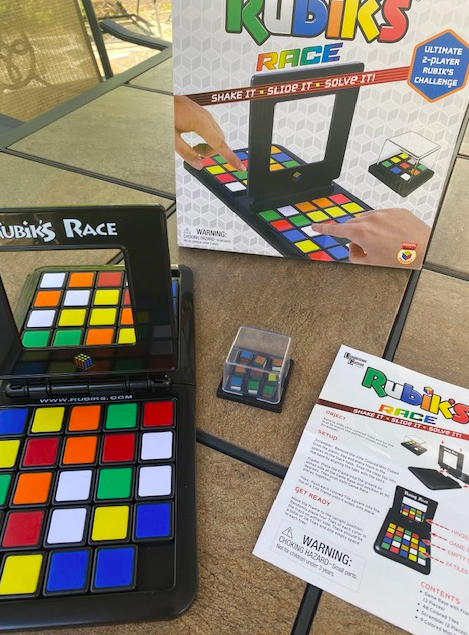We offer you Short Texts at Your Fingertips. Twice each week, we provide teaching ideas around a different type of short text that is easily found in the home, so that no family feels under-resourced. These ideas can integrate into virtually any curriculum and pedagogy, from Workshop to basal. If you are a caregiver, teacher, or curriculum director, these brief but mighty texts and lessons are our way of saying thanks. And our way of giving children authentic and enjoyable reading and writing engagements each day.
Written by Julie Wright & Elizabeth Keim
SHORT TEXTS AT YOUR FINGERTIPS: GAME DIRECTIONS
If you are like us, we have favorite go-to games that get played over and over again and some games that we hardly take off the shelf. Often, that’s because it’s easier to grab the game that we love and already know how to play versus new and unfamiliar ones. Card games, board games, dice games, puzzle games, cooperative games, and more...all include a short text in the form of a set of directions that create reading opportunities galore!
A messy, but game-filled, shelf filled with oodles of directions to read and enjoy!
VIDEO
If you’d like to see a short video on how to use game directions to entertain, inform, and inspire watch.
TRY THIS!
Step 1
Take a look at your game shelves. Grab any card, board, or dice game that sounds like fun and that you want to play. If you don’t have any board or card games, you can look for games online and take a look at the resources below for some ideas. Once you find the game you want to play, pull out the directions and preview them. Decide if you want to read the directions once all the way through or read them one section at a time. Consider asking:
What do you notice about how the directions are set up?
Do the directions have headings or subheadings that help you navigate the text?
Dice, card and board games are great because they are easily transportable and can be played in many places. We are tired of being inside, so we’re taking some of our games outside.
Step 2
Take a closer look at the game directions. Here’s an example of some game directions we love.
Here’s what we noticed:
The directions are folded like a leaflet or flyer.
There are a few headings that help us orient to the game such as Object, Setup, Get Ready.
The game directions are listed in numbered steps.
There are colorful images that help demonstrate what the text is talking about.
This text is filled with reading, writing and talking opportunities. For example, you could:
Play the game a few times and then read further to learn about Other Ways to Play.
Compare this 2-player version to the original Rubik’s Cube puzzle.
Visit the website of the Original Rubik’s Cube to learn about different types of Rubik’s Cubes and lots of hints, tips and challenges.
Read about and watch short clips on Speedcubing to learn about the world record holder for solving the Rubik’s Cube in the shortest amount of time.
Step 3
Look for other reading, writing and talking opportunities using this short text type.
Reading Ideas
Depending on the difficulty of the game, reread or revisit the game directions as needed.
Compare directions from one game to another. How are they similar? How are they different?
Pick a game -- one that you enjoy, one that is challenging, or one that has you intrigued -- research the history of the game.
Who is it made by?
Has the company been around for a long time?
What other games do they make?
If the directions are written in more than one language, compare the sets of directions.
Writing Ideas
Rewrite some of the directions to your favorite game, making changes that you think would make the game even better.
Write, draw or redesign the game box or container. What would you keep the same? What would you change?
Create your own game, including writing the directions.
Write a game review for your favorite or least favorite game.
Talking Ideas
Share the strategies you used to play the game.
Talk about your favorite types of games and explain why you like them.
Talk about your least favorite types of games and explain why you don’t like them.
Discuss the games you know how to play without any written directions such as 20 Questions, I Spy, The License Plate Game, and Hopscotch. How did you learn to play them?
Step 4
Look for other images that you find and read those too!
FOR MORE RESOURCES, CHECK THESE OUT!
Check out some of the largest game companies for types of games, interesting facts, and different versions of the same game.
There are a lot of games online. We suggest searching for the types of games that pique the interests and needs of the players. Some criteria you can use as you search include:
Age Ranges [Ex. Ages 7 and up]
School [Ex. Preschool, Elementary]
Type [Ex. Card, Dice]
Number of Players [Ex. 2 Players]
Difficulty Level [Ex. Novice, Experienced, Expert]
Ratings [Ex. 1 Star, 2, Stars]
Other sites you might find helpful for online games include:
COMING SOON!
Short Texts: Mighty Mentors That Move Readers and Writers Forward by Julie Wright & Elizabeth Keim (2022)


